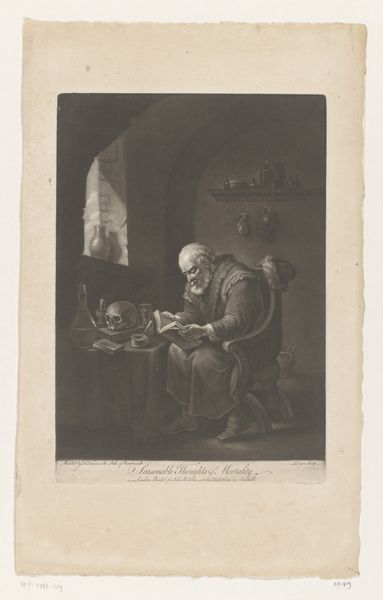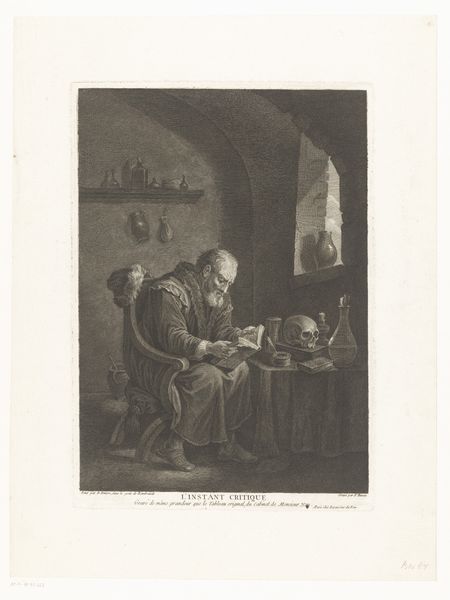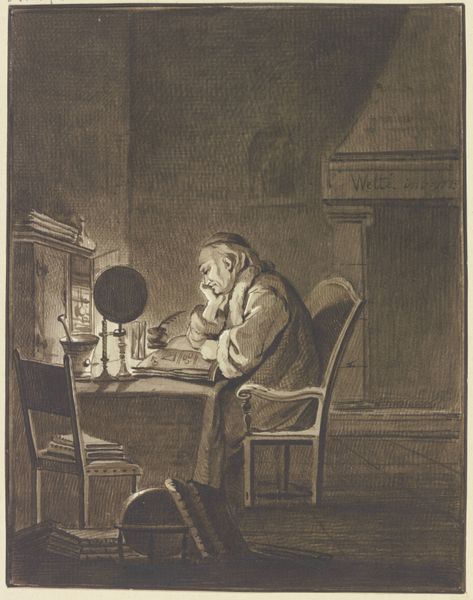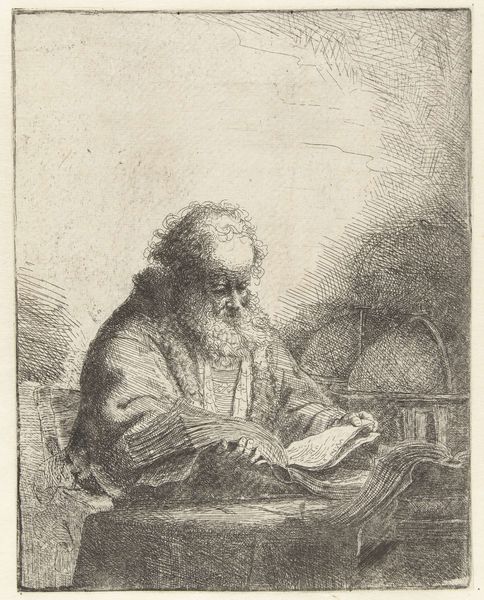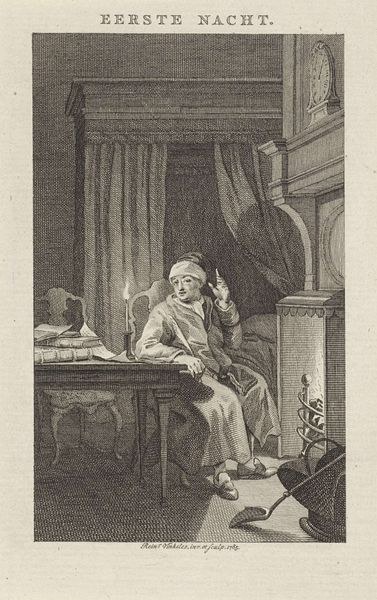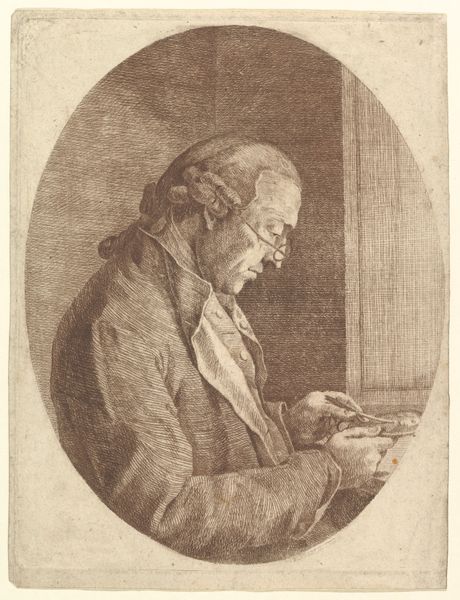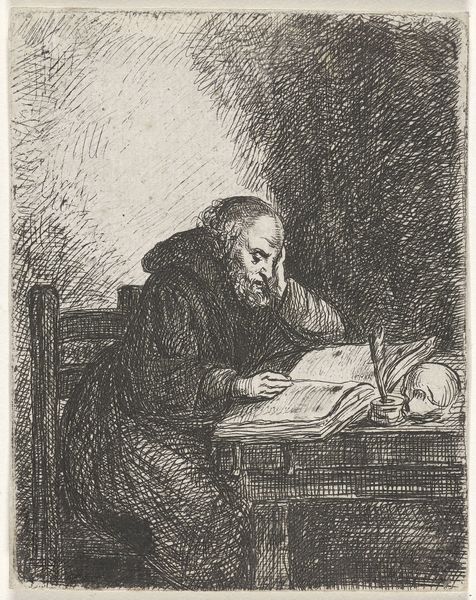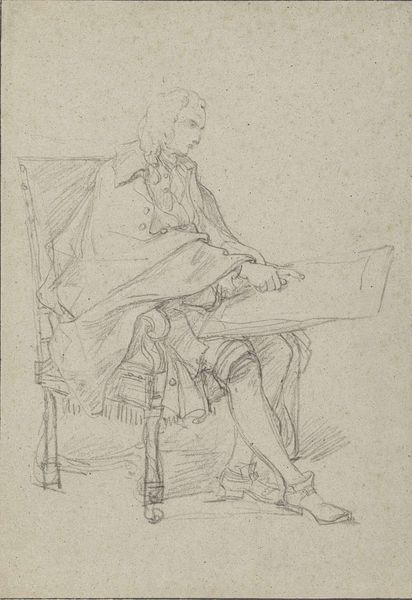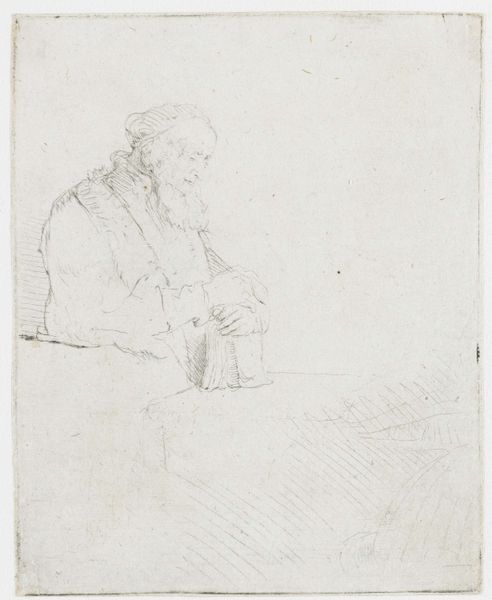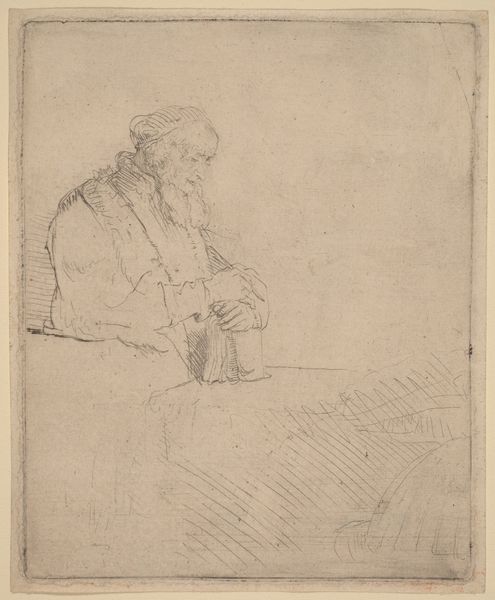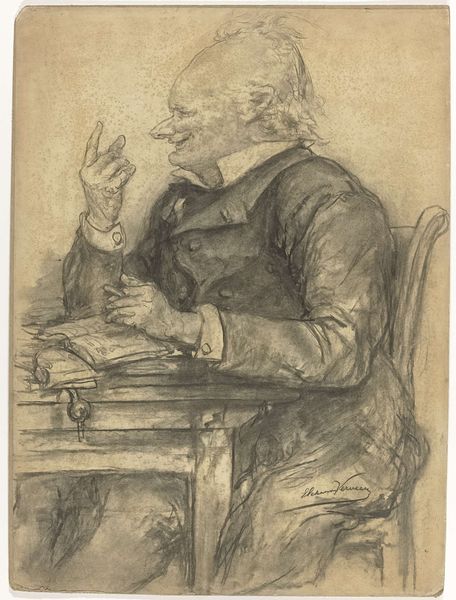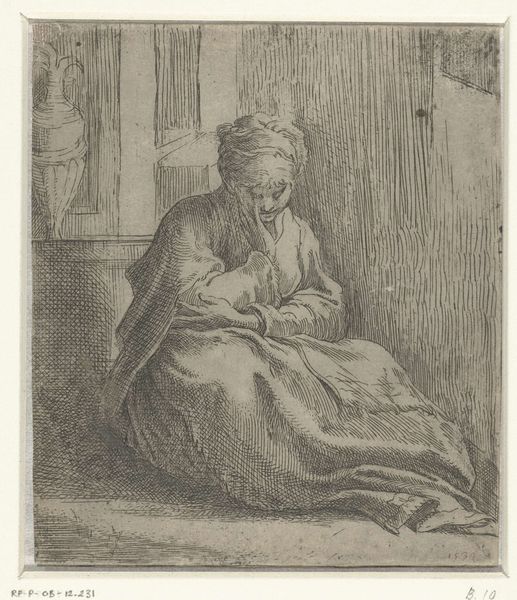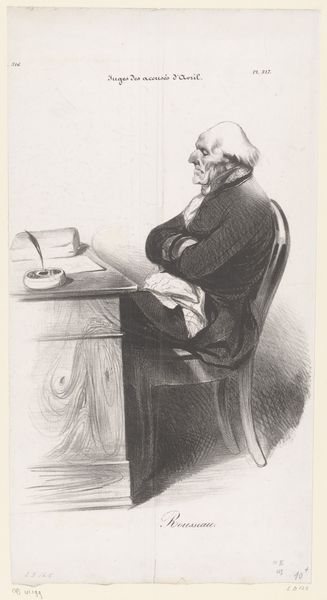
Dimensions: height 220 mm, width 172 mm
Copyright: Rijks Museum: Open Domain
Editor: Here we have "De briefschrijver," or "The Letter Writer," a pencil drawing by Willem Joseph Laquy, dating roughly between 1748 and 1798. The soft greys create a very quiet and intimate scene. How do you interpret this work? Curator: This drawing offers a window into the evolving social landscape of the late 18th century. Letter writing, during this period, wasn’t just about communication; it was a powerful tool for forging relationships, conducting business, and even engaging in political discourse. Given that, how does Laquy's intimate depiction challenge or reinforce the established gender roles within that historical context? Editor: That's a great question. I guess I hadn’t thought of letter-writing as a political act. I was more focused on the private moment it seems to capture. Curator: Exactly, and it's within that tension – the private versus the political – that the work operates. Consider the sitter's pose. It is suggestive of someone with means, but could Laquy also be pointing towards new forms of expression and agency emerging among a broader population through the act of writing? What might this image be communicating about literacy, class, and access to information at this time? Editor: I see what you mean. I was initially drawn to the personal nature of it, but thinking about who had access to literacy and communication shifts the focus to social structures and power dynamics. It feels much more complex now. Curator: It’s precisely that tension – the interweaving of individual stories with broader societal shifts – that makes art from this period so compelling. What felt personal then can now, centuries later, also act as evidence for how gender and class conditioned lived experience. Editor: It's amazing to think a simple drawing can reveal so much about a society.
Comments
No comments
Be the first to comment and join the conversation on the ultimate creative platform.
